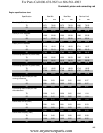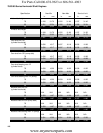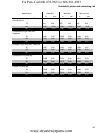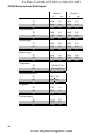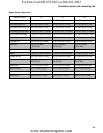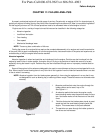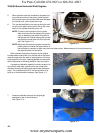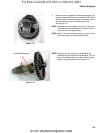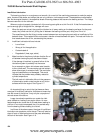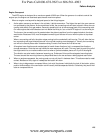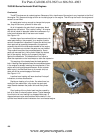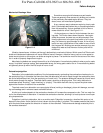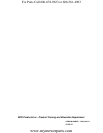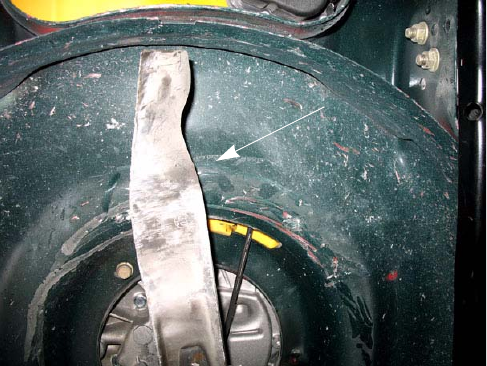
Failure Analysis
127
Mechanical Breakage/ Wear
Sometimes an engine fails because a part breaks.
There are generally three causes of a broken part, outside
of the previously discussed engine failures. They are
abuse, wear, and manufacturing defects.
A very common way to abuse an engine is a bent crank
shaft. Crank shafts bend when they, or something bolted to
them hits something. A prime example of this is when a
mower blade hits a rock. See Figure 11.11.
As the engine runs, there is friction between the mov-
ing parts. This friction wears down the parts. Lubrication
slows the process, but wear can not be prevented. Over
time the parts wear to the point they break or fail in some
way. Car tires are a good example of wear. A tire will only
last for so many miles before all the rubber is worn off and
the tire goes flat. Bushings are another example, they are
designed to wear so that the wear of other parts will be
minimized.
Vibration issues have a “chicken and the egg” relationship to mechanical failures. Which came first? Bent crank-
shafts and imbalanced implements will cause vibration issues. However a vibration issue, such as a over speed or
loose mounting bolts on the engine, can shake an engine to pieces. The technician must find the source of the vibra-
tion in order to properly diagnosis an engine.
Manufacturing defects are wrongly blamed for a lot of failed parts. A manufacturing defect is when a part is made
wrong. It could be a porous casting, parts assembled wrong, the wrong parts used or so on. A manufacturing defect
will generally show up within the first couple of hours of use.
Detonation/preignition
Detonation is the undesirable condition of the fuel spontaneously combusting the combustion chamber prior to
the spark plug firing. In this state, the flame front from the detonation will start to travel through the combustion cham-
ber and a second flame front, from the spark plug, will crash into it. The pressure differential caused by this will send
shock waves through the engine. The shock wave cause a knocking or pinging noise. This is why detonation is
sometimes called “knocking”, “spark knocking” or “pinging”. The shock wave will also try to push the piston down
against the direction of rotation of the crankshaft.
The shock wave from detonation can cause piston failures (melting or breakage), piston skirt damage, connect-
ing rod breakage and in extreme cases crankshaft failures.
A build up of carbon deposits in the combustion chamber will increase the compression ratio. This is a major fac-
tor for the development of detonation. It insulates the combustion chamber, allowing it to heat up above normal oper-
ating temperatures.
Preignition is similar to detonation, but on a smaller scale. Preignition is cause by a localized hot spot or a hot
deposit in the cylinder. As the fuel/air mixture is drawn into the cylinder, it is ignited. This creates pressure that tries to
push the piston down against the direction of rotation of the crankshaft. The sounds and damage created by this is
the same as detonation.
Figure 11.11
Bent blade
For Parts Call 606-678-9623 or 606-561-4983
www.mymowerparts.com



